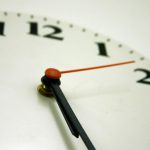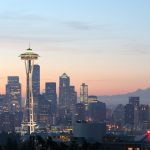
Astronauts who spend long periods on the moon could suffer from bronchitis
Saturday, June 09, 2018 by RJ Jhonson
http://www.realsciencenews.com/2018-06-09-astronauts-who-spend-long-periods-on-the-moon-could-suffer-from-bronchitis.html

If you’re planning a base on the Moon, it looks like you have more than just logistics to worry about. Scientists from Stony Brook University have discovered that with prolonged exposure to moon dust, astronauts could end up contracting bronchitis – or worse.
The research team, led by Rachel Caston of the Stony Brook University School of Medicine, sought to understand how the Moon’s regolith – the dusty layer that covers its surface – would affect cells from humans and mice. They used live human lung cells and mouse brain cells cultured in a lab as test subjects.
Because lunar dust is too valuable and is extremely rare, the team simulated dust particles found in the Moon’s highlands and volcanic plains using soil samples from Earth. These samples were ground into powder to imitate the fine texture of lunar regolith.
The cell cultures were then exposed to the simulants. Upon exposure, 90 percent of the cells in both groups died. Mouse neurons suffered considerable damage, while the human lung cells fared much worse.
The injury to the human cells was so severe that the scientists had no way to measure DNA damage.
The researchers believe that prolonged exposure to lunar dust generates free radicals that disrupt proper cell function. If astronauts were to stay in the Moon long-term and inhale the fine particles on its surface, they could develop an array of health problems.
These include irritation and inflammation of lung tissue, as well as conditions like bronchitis and even lung cancer.
This study is the first to look into the effects of prolonged exposure to extraterrestrial regolith in airless planetary bodies like the Moon and Mars.
Previous inquiries focused on factors such as low gravity and the higher intensity of solar radiation, but not on planetary surface particles and how they can lead to disease in human beings.
Prior experience on regolith toxicity
The Apollo manned lunar missions offered not just in situ photographs of the Moon; they also revealed the possible toxicity of its surface.
The Moon lacks an atmosphere. In the case of the Earth, the atmosphere prevents the full brunt of the sun’s radiation from hitting the surface and helps curb the risk of sunburn and skin cancer.
Exposure to strong solar radiation charges lunar regolith with static and makes them extremely likely to stick to fabric. Astronauts from the Apollo 17 mission found this the hard way when they brought back and accidentally inhaled lunar dust that clung to their suit.
They developed symptoms that included wheezing, sore throat, and watery eyes. Harrison Schmitt, one of the astronauts, called the illness “lunar hay fever.” The ailment subsided after a short period.
The astronauts’ experience and the results of Caston’s research are in line with previous studies conducted on toxic dust from coal mines, dust storms, and volcanic eruptions. When these particles are inhaled and arrive at the alveoli, the lung components where the exchange of carbon dioxide and oxygen happens, they can cause mutations that may lead to cancer and other pulmonary issues.
On future prospects
Caston’s research offers insight into how astronauts’ safety can be maximized. With several parties looking to extend their horizons in space travel and exploration, the findings couldn’t have been timelier.
Both Russia and China are looking to send their pioneers to the Moon. More than four decades after the last Apollo flight, NASA plans to go farther and conquer Mars.
The European Space Agency (ESA) has an even loftier goal – an international village on the surface of the Moon.
But until the health risks of inhaling lunar dust, as well as a variety of other setbacks, are addressed, it looks like such an ambitious undertaking will have to wait.
If you like stories on space travel and exploration, you can read more at Space.news.
Sources include:
Tagged Under: Tags: astronaut, Bronchitis, lunar dust, lung cancer, Mars, Moon, moon dust, NASA, outer space, science, Space, space dust, space exploration, Space Mission, space program, space travel





